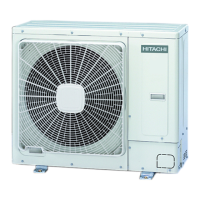What causes transmission error between central and indoor communication in my Hitachi Air Conditioner?
- SShawn WhiteAug 30, 2025
A transmission error between central and indoor communication in your Hitachi Air Conditioner can be caused by an indoor fuse meltdown, or indoor/central connection wiring issues (breaking, wiring error, etc.).



